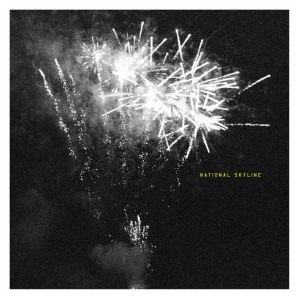
I’ve never been comfortable with the term “selling out.” During the ’90s when using it was particularly in vogue, cynics would scoff at bands for jumping ship from trusted independent labels to majors, for becoming more melodic and approachable, for countless other things (tour buses over rusted-out vans, hotel rooms over living room floors, opening for bigger alt-rock bands instead of headlining small club tours) that came with the territory. These changes from the DIY lifestyle mostly benefited the bands themselves, but who was I to judge the exhaustion of playing a poorly promoted show in Omaha to twelve paying customers, sleeping on a porch in the middle of winter, and spending all of the proceeds from the show on gas to reach Dallas. All I could do was focus on the recorded results. For every ill-fated major label debut (Girls Against Boys’ Freak*on*ica), there was a wonderful album like Jawbox’s For Your Own Special Sweetheart, Hum’s You’d Prefer an Astronaut, or Shudder to Think’s Pony Express Record that wouldn’t have been as great without the resources of a major label. I couldn’t view merely being a part of that system as an indictment of a band’s worth. It came down to the end product and whether bands could succeed in either system.
In the last decade, “selling out” has evolved. The major/independent divide has faded into the background as the former struggle to maintain importance and the latter gain access to more of those resources. Now the most frequent point of contention is licensing music for commercials. Of Montreal caught heat for changing the lyrics of “Wraith Pinned to the Mist (And Other Games)” to better fit an Outback Steakhouse commercial. But for the most part, the cries against these acts are muted in comparison to the rage directed at bands daring to jump ship from Dischord or Touch and Go. Given the downturn in the recording industry, it’s easier to understand bands taking advantage of any opportunities that come up. Is it also that the corporate shadow looming over these scenarios is less apparent than a group signing with a major? After all, they’re less involved in the production of the end product.
Enter Hype Music. A collaboration between Extreme Music, an agency that licenses music for films, television, and commercials, and MTV Networks, the past and present home of 120 Minutes, Hype Music hand-selects bands, grooms them for synch-ability, and clears up any potential licensing headaches before music supervisors get nasty e-mails from their legal departments. Their artists benefit from exponentially increased exposure in the backgrounds of MTV reality programming, network dramas, and feature films. Win-win, right?
Not quite. If major labels were criticized for pushing bands to fit a specific context—three-minute slots on modern rock radio, call-out hooks for DJs, compressed audio to fit alongside polished peers—making music for licensing narrows those contexts considerably. Consider the grandfather of reality programming, MTV’s The Real World. On any given season you’ll encounter roommates aching for home, drinking with their cast mates, fighting with their cast mates, flirting with their cast mates, making the tearful decision to break up with the significant other back home, making the tearful decision to get back together with the significant other back home, etc. It’s a familiar template. Instead of having to hunt down songs that fit each of those contexts, why not have them ready? Why not have bands churn out these songs? From a logical perspective, it makes complete sense.
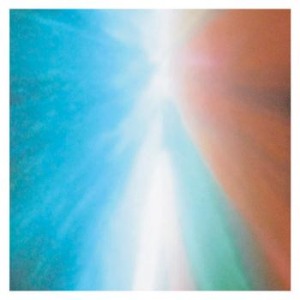
I wouldn’t care whose songs appear on the background of Jersey Shore or Teen Mom or how they got there if not for one personal wrinkle. National Skyline, the long-running project of Jeff Garber of Castor / Days in December / Big Bright Lights / Year of the Rabbit, is now one of Hype Music’s chosen acts. In 2011, National Skyline has released two EPs (Broadcasting, Vol. 1 and 2) and two LPs (Bursts and Broadcasting) of music tailor-made to these contexts. For the most part, these releases come with surprisingly little fanfare, appearing on iTunes and Amazon with almost no promotional push beyond the placement of songs on the aforementioned programs. The EPs were issued on Adventure Broadcasting, ostensibly the label of former Lassie Foundation member Jason-71, but as digital-only releases, they’re essentially self-released. The two LPs have the Hype Music stamp of approval. In my review of Broadcasting, Vol. 1, I theorized that the songs were custom-fitted for the rhythms of reality television, given National Skyline’s prior appearances in that realm, but the confirmation that Bursts and Broadcasting are rubber-stamped for that purpose gives me no comfort.
Before going any further, let me make one critical observation: If Jeff Garber chose an entirely new band name or pseudonym for these releases, I would have fewer qualms with their existence. (I would also likely not know of their existence.) But if something comes out with National Skyline on the cover, I am bound to be curious. This is a project that had mysterious, unreleased beginnings as a Champaign super-group of Jeff Dimpsey (Hum), Nick Macri (C-Clamp), Jeff Garber (Castor), and Derek Niedringhaus (Castor). When the first recordings appeared in 2000, the line-up had been pared down to Garber and Dimpsey and the sound had evolved into a combination of Antarctica’s icy electronic and Unforgettable Fire-era U2. Two EPs and an LP later, Garber moved to LA and the project went into deep freeze. After a fake-out ending with the maudlin The Last Day EP in 2007, Garber made a valiant return with 2009’s Bliss & Death, even bringing back Derek Niedringhaus for a few tracks. Suddenly my excitement for the project—and Garber’s output as a whole—had returned. After picking up two mixed-bag, closet-cleaning EPs, I waited patiently for the next LP.
But does either Bursts or Broadcasting count as that next LP? Are they in the same continuity as Bliss & Death? Or are they in the commercial branch of National Skyline? Am I grasping at straws to entertain the possibility of multiple branches of the same band? Is it ever that simple? Consider Sonic Youth’s split between the avant-garde tendencies of their SYR EPs and the more grounded noise-rock of their official LPs. NYC Ghosts & Flowers confirms crossover between those lines. It’s naïve to think that Garber’s sequestering the “real” follow-up to Bliss & Death in a hermetically sealed chamber away from the Broadcasting material.
No, Bursts and Broadcasting were released as National Skyline records, so they are National Skyline records. If you squint, you can hear echoes of Bliss & Death in the guitar tones, in the production values, in the vocal melodies. Less effort is needed to hear the sonic references to the ’80s output of The Cure or the contemporary fuzzed-out pop of Deerhunter and Phoenix (all references appropriated from Hype Music’s page, but obvious enough without it). But there’s no meat to these syrupy confections. Between the track lengths that rarely stretch past two-and-a half minutes, the trite, surface-level insights of the lyrics, and the lack of major variation, fatigue sets in instantaneously. Choose any song and you’ll find lyrics like “I’m going to throw my arms around you / I’m going to wrap my love around you / You can have my heart now / You can have almost anything / You can pull my heart out / You can do almost anything you want” (“Almost Anything,” Broadcasting). Such lyrics appeared on The Last Day EP and the Bliss & Death companion EPs, but not exclusively. These songs indulge Garber’s worst habits. If I cared to sit through these 25 tracks a few times, I’d cite which stock television scenes they’d best fit. But I don’t want to listen to these songs. They’re not for me, the longtime Castor and National Skyline fan. They’re for specific contexts in television programming and fans of those programming.
Unlike the jaded scenesters crying “Sell-out!” at major-label bands in the ’90s, I find no joy in pointing out the extent of Jeff Garber’s commercial embrace. I understand it too well. MTV’s licensing of Bliss & Death songs likely made more money than the digital album sales. Scraping together gigs as a guitar tech, session musician, and recording engineer isn’t a consistent living. His shot at a major-label meal ticket (Year of the Rabbit) ended abruptly, and their Ken Andrews-less follow-up band (The Joy Circuit) couldn’t get traction. Hype Music offers Garber exposure to a new audience and a steady paycheck. It’s a familiar carrot. I can’t blame Garber for chasing it.
I keep thinking of best-case scenarios for this situation. Jeff Garber finds a way to write substantial National Skyline songs within Hype Music’s confines, proving once again that he’s a talented musical chameleon. Garber saves his worthiest tracks up for Bliss & Death, Vol. 2, and his contract with Hype Music allows for its release. Jeff Dimpsey moves out to LA and provides the editorial oversight the project needs. Castor’s discography gets a vinyl reissue. But the facts don’t support those pipe dreams. Consider this one: Garber’s released 34 National Skyline songs in 2011. Castor officially released 22 songs in their lifespan. The 1999–2001 iteration of National Skyline issued 22 songs. He’s more productive in this era than any other and, on a financial level, more successful. This era of National Skyline is here to stay.
That makes one of us.
|
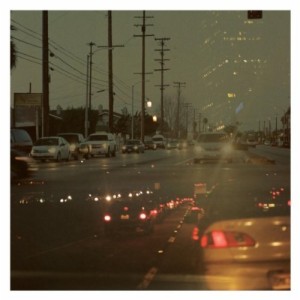
After clearing the decks in 2009 with National Skyline’s first full-length (Bliss & Death) since 2001’s This Equals Everything and two companion EPs (Look into My Eyes and Bloom), Jeff Garber laid low in 2010. His only releases were the digital singles “Ashes” and “Do You.” Garber slinks back into the spotlight with the unannounced Broadcasting, Vol. 1 EP, picking up where Bliss & Death’s more languid tracks left off.
Opening track “When I’m Alone” showcases Broadcasting’s bag of tricks: acoustic guitar, gossamer guitar overdubs, distant drum machines, and Jeff Garber’s weary vocals. It’s lyrically thin, repeating lines like “When I’m alone / I get so lost / When I’m alone / I get so tired of my life” as breadcrumbs to make it out of the instrumental mist.
Here’s the rub: “When I’m Alone” showcases all of Broadcasting’s bag of tricks. Granted, live drums replace the drum machines on the final three songs and “Walk Away” adds simple piano, but Garber seems glued to mellow acoustic balladry. If the songs were compelling, perhaps I could overlook the sonic similarities, but that’s not the case. The lazy song titles (“When I’m Alone,” “I’ll Be Allright” [sic], “Stay with Me,” “Walk Away,” “I’ll Stay with You”), trite lyrics, and numbing lack of energy turns Broadcasting, Vol. 1 into sentimental mush.
Garber’s been here before. The Joy Circuit’s EP1 and National Skyline’s The Last Day EP both suffer from thin lyrics and generic aesthetics. I’ve previously cited the lyric “Hey you / I know you / This is not where you belong” from The Joy Circuit’s “They Know Where You Live” as a painfully a propos reading of Garber’s output since This Equals Everything and his residency in Los Angeles. Yet Bliss & Death revived most of my faith in Garber and National Skyline. There’s a “fooled me twice—shame on me” quality to Broadcasting, Vol. 1, one that I take no pleasure in relaying.
Here’s my theory. Broadcasting, Vol. 1 is a dumping ground EP for Garber’s latest batch of TV placement songs. The soupy melodrama of “The Last Day” wasn’t a great follow-up to “A Million Circles,” but it did appear in a key scene of the third season of Veronica Mars. (An ironically appropriate placement, given that season’s infuriating lack of direction and inspiration.) At least four of National Skyline’s tracks have appeared on MTV’s cultural touchstone Jersey Shore: “Do You,” Bliss & Death’s “Edge of the World” and “Revenge,” and “Look into My Eyes.” If digital single sales are way up and album sales are way down, it’s likely that Garber gains more fans and earns more money by getting those songs on Jersey Shore than releasing an album of them like Bliss & Death.
My issue isn’t with Garber’s decision to monetize his music via MTV reality series. The man has to eat. My issue is that the songs on Broadcasting, Vol. 1 are tailor-made for that purpose. I know Garber can write an affecting lyric—“Five Hours Later,” “Tracking Sounds Alone,” “Miss Atlantic,” “This Is Not a Test,” and “Kandles” all qualify—but the on-the-nose emotions of “I’ll Be Allright” are all surface, no depth. How easy would it be to fit lines like “I’m going to be all right, you’ll see / No need to worry about me” and “I won’t call you anymore / And I won’t be there when you’re alone” into a tender post-break-up scene? Is there any other context for it? It’s admittedly not that far off from the pained semi-yodels of “Tracking Sounds Alone”—“I looked you up in the telephone book / I took my phone off the hook” and “I wish you rang / And I wish I sang”—but there’s a complexity (not to mention a genuineness) to the emotion in “Tracking Sounds Alone” as Garber careens between regret, pride, self-doubt, and optimism. Nothing on Broadcasting offers that complexity or rings so true. (Nor can I imagine “Tracking Sounds Alone” being used as background music.)
Does this mean that the proper follow-up to Bliss & Death will be a similar disappointment? Not necessarily. Only “When I’m Alone” seems like a candidate for inclusion, and it sounds more like a good b-side than a deep album cut. With more energy, more guitar overdubs, and better lyrics—i.e. the things that made Bliss & Death worth hearing—Garber’s back on track. But once you’ve gotten used to the on-the-nose lyrical approach, is it difficult to stop? That’s the big question. If Broadcasting, Vol. 1 is, as I suspect, a dumping ground for Garber’s potential TV placements, let’s hope it doesn’t pollute the groundwater of his main base.
|
|
Jeff Garber’s been clearing the National Skyline vaults this year with a series of EPs, proving that the eight years between This = Everything and Bliss & Death (which I covered here and here) weren’t comprised solely of Year of the Rabbit, the Joy Circuit, and National Skyline’s The Last Day EP. These EP tracks are culled from a cast-aside National Skyline album called Faux Evil, a brief foray as the Black Swan, and b-sides from the Bliss & Death sessions. I anticipate the third EP to be more of the same, but he may very well be working on some all-new material for that one. [Editor’s note: No idea if this third EP will ever come into existence.]
The barometer for success on both of these EPs is straightforward: the closer to Bliss & Death and the further away from The Last Day the better. I’m not expecting anything like the National Skyline EP or This = Everything, but I don’t want to relive the yearning modern rock of “The Last Day.”
As I mentioned before, I hate buying MP3s and would’ve bought physical copies of these EPs long before their digital counterparts, but I had $10 of Amazon MP3 store credit to spend and only one logical use. If Garber decides to press all of this stuff on vinyl I’ll gladly fork over the money for it (hint hint).
115. National Skyline – Bloom EP MP3s – Adventure Broadcasting, 2009 – $4.99

With two alternate versions of songs from Bliss & Death, the Bloom EP feels like a standard CD5 from the mid 1990s. The title track gets a single edit, done for its video, which will make it easier to slot into my year-end mix, but I probably could’ve done a reasonable edit on my own. “Edge of the World” appears in an acoustic take, which is pleasant but hardly necessary. So the EP comes down to its three unreleased songs. You can read Garber’s origins for the songs here, but it’s worth making those comments a bit more transparent.
“Gravity (I-IV)” is the clear winner, a nearly eight-minute-long take on shoegaze-informed 1990s rock that Garber deemed too heavy for Bliss & Death. While I think the 1990s part would make “Gravity” stick out on the album more than its comparative heft, it’s a nice venture into Fantastic Planet-era Failure and probably more interesting than anything that came out of Garber’s collaboration with Ken Andrews himself, Year of the Rabbit. (Don’t expect me to return to that album anytime soon.)
“Lights Out” and “Silence” are more mixed. The former was deemed too poppy for the album (accurate) and ultimately comes off as a more musically interesting version of “The Last Day.” Trite lyrics like “Wearing all the things that nobody wears / Whoa-oh” don’t do Garber any favors, but the post-U2 guitar textures are fine. “Silence” starts out as a muffled piano ballad before bursting out multi-tracked guitar leads. It ends with a return to the minimal aesthetic of the intro, but I’d prefer if he’d stuck with that style the whole song.
116. National Skyline – Look into My Eyes EP MP3s – Adventure Broadcasting, 2009 – $4.99
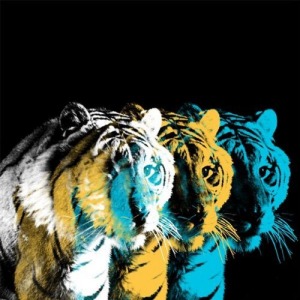
Look into My Eyes features four new songs and one alternate take of a Bliss & Death song. The latter is a drum-programming-happy version of “Glimmer,” which sounds more like This = Everything but the aesthetic doesn’t quite fit the song.
The rest of Look into My Eyes stresses something that first came to me regarding Bliss & Death: the outros are almost always the most interesting part of the song. The title track is a zero-sum game, as negilible modern rock guitars and trite lyrics are balanaced out by intriguing outro and some better vocal melodies. “Hope?” starts with more of the mid-tempo semi-acoustic foundation from much of Bliss and Death, but its extended outro is a great payoff, layering synth trumpets, a focused guitar arpeggio, hand claps, and strummed acoustics with aplomb. It could have easily been on the LP. The two-minute “In Flight Movie” bucks the trend by being a short instrumental, but I could argue that it’s an outro waiting to happen. Finally, “Someone Else’s Dream” technically kicks in during the bridge, but the second half of the song is so much better than the relatively bland beginning.
I have to wonder if Garber salvaged these songs by tacking on the interesting parts. While that may sound cynical, I look at it this way: imagine how good his next LP will be if he starts with the outros.
|
|
This purchase marked the first time that I’d bought MP3s since I had an eMusic account for a few months in college. Those mp3s from eMusic (courtesy of a bulk-download monthly subscription) are absolutely worthless to me now—if not entirely deleted—since they were all 128 kpbs files and I’ve since upped my minimum standard to 192 kbps. While that subscription got me interested in a few bands (Swirlies, Pilot to Gunner), the actual music had to be replaced by physical copies in order to get listenable sound quality. (The scourge of over-compressed cymbals!) How do I know that’s not going to happen with the current standards? What if iPods make a huge jump in capacity, encouraging use of lossless files? Do I get to re-download my files? I doubt it. There’s no flexibility with digital downloads. Don’t get me started on my fear of a permanent hard drive crash, since I already had to pull the freezer trick to rescue files from my drive back in 2005.
I understand the benefits of having a purely digital musical collection, the foremost being the headache I’d avoid when I move out of this apartment in the next year, but I just love the physical thing too much. If this EP had been pressed to CD I would have already bought it, but stomaching the exchange of money for files caused a two-year delay. I’m mad just thinking that National Skyline’s new album is MP3-only, since I’d gladly buy a pressing with artwork, but that’s unlikely to happen.

24. National Skyline – The Last Day EP – iTunes Store, 2007 – $3
A few people told me that this National Skyline EP was back up to Garber’s old standards when it was originally released, but at the time I was still smarting from the overly L.A. output of The Joy Circuit. (“Hey you / I know you / This is not where you belong” from “They Know Where You Live” could not be a more accurate assessment.) Ever since he half-joked in a Milk Magazine interview that he’d break Castor up so he could start a band that sounds like the Offspring (only to break up Castor within the year), I suspected Garber would make a push for a major label contract. The Joy Circuit was that push. He extracted the mid-1980s U2 fetish from the National Skyline records, put Year of the Rabbit’s rhythm section to work, removed the icy electronics of the first three National Skyline releases, and dropped the depth of his past songwriting.
Garber’s always adapted to his surroundings or prevailing indie rock winds: the first Castor CD was a mix of C-Clamp and Braid with Seam-styled hushed vocals; Days in December took up Sunny Day Real Estate’s emo-core; Morning Becomes Electric was straight lo-fi indie rock; Castor’s “Miss Atlantic” brought in some of Polvo’s abrasive math-rock influence; Castor’s Tracking Sounds Alone appropriated some of Shiner’s heaviness to balance out Garber’s exploded vocal hooks; Big Bright Lights tried out a number of styles including post-rock, acoustic singer-songwriter, and post-grunge; and National Skyline primarily stuck with a U2-informed version of Antarctica’s icy electro-rock, but inexplicable aped Beck on “Identity Crisis” from the Exit Now EP. Pointing this pattern out in no way dismisses the success of those albums. Braid and C-Clamp never matched the fluidity of Castor’s “Pontiac,” Shiner never wrote a vocal hook like Castor’s “Moving Backgrounds” or “Tracking Sounds Alone,” Antarctica never channeled the emotion of “Kandles” or the effortless pop of “October.” Garber is a shape-shifter, to be sure, but there was an underlying honesty and creativity to the majority of that material, which is why I still love it and continue to listen to it. His vocals changed, his style changed, his collaborators changed, but he remained compelling. That stopped with the mush-mouthed modern rock of The Joy Circuit. He finally found a vocal style that annoyed me. He finally lost the creativity that buoyed his other work. He did not find Offspring-type success, however.
Stealing a Jimi Hendrix reference from Polvo’s Shapes, The Last Day is “National Skyline, Slight Return.” The aesthetic depth is back and Garber spit out the marbles from his cheeks, but the songwriting itself isn’t an improvement on The Joy Circuit’s EP1. The first two songs feature saccharine optimistic peaks (“How do I know where to begin? / And how do I know if it’s real?” from the title track) reminiscent of the musical cues on commercials for Grey’s Anatomy. Gross.
I downloaded this EP to compare it with this year’s Bliss & Death, a record that I initially disliked but has quickly grown on me, and when I think about how far Garber has come since The Last Day, it brings the new LP up another notch. The main problem with that LP—pacing—has nothing to do with the problems here, which is a huge cause for optimism, and not even the TV melodrama variety. If you’re going to drop money on MP3s, buy Bliss & Death.
|
|
While I still need to finish writing my 2008 wrap-up and cover the music I've bought this year, I'll take a minute to cover the first few 2009 releases of note.
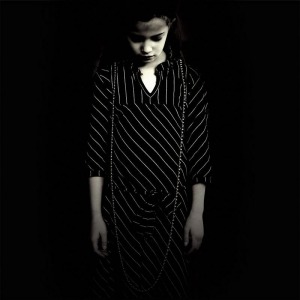 Last Days - The Safety of the North: Continuing to mine the areas between ambient, post-rock, and electronic music, Graham Richardson has quietly built an impressive discography as Last Days. Both 2006’s Sea and 2007’s These Places Are Now Ruins are quietly compelling listens and The Safety of the North expands upon the success of those records. Richardson mentioned that this record is more cinematic in approach, which is quite evident from the fifteen tracks spanning sixty-six minutes and the addition of both spoken word excerpts and female vocals on a few tracks. I keep repeating “Life Support,” which reminds me of an ambient take on the interlocked melodies of Steve Reich’s Music for 18 Musicians. While I certainly wouldn’t mind if “Life Support” mirrored the album-long length of the Reich piece, I can’t wait to spend more time with the rest of the album, since other tracks like “The City Failed” and “Onwards” are also stand-outs.
Last Days - The Safety of the North: Continuing to mine the areas between ambient, post-rock, and electronic music, Graham Richardson has quietly built an impressive discography as Last Days. Both 2006’s Sea and 2007’s These Places Are Now Ruins are quietly compelling listens and The Safety of the North expands upon the success of those records. Richardson mentioned that this record is more cinematic in approach, which is quite evident from the fifteen tracks spanning sixty-six minutes and the addition of both spoken word excerpts and female vocals on a few tracks. I keep repeating “Life Support,” which reminds me of an ambient take on the interlocked melodies of Steve Reich’s Music for 18 Musicians. While I certainly wouldn’t mind if “Life Support” mirrored the album-long length of the Reich piece, I can’t wait to spend more time with the rest of the album, since other tracks like “The City Failed” and “Onwards” are also stand-outs.
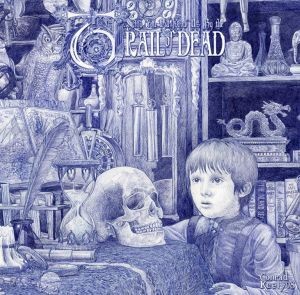 …And You Will Know Us by the Trail of Dead - The Century of the Self: The Festival Thyme teaser EP was just good enough to convince me to check out The Century of the Self, which I’d hoped would remind me of Source Tags & Codes but instead recalls the expansive prog-rock of Worlds Apart. Whereas Worlds Apart and So Divided seemed thrilled to deviate from expectations, The Century of the Self is lyrically consumed with returning to what was lost—cough, their direction, cough—but it’s often unsuccessful in mirroring that theme musically, falling prey to the same overblown prog-rock impulses. There are sections of this album that remind me of 1970s Genesis albums—having two piano-based “Insatiable” tracks, for example—which is an awfully strange tactic for any band to take. There has been some progress since So Divided, however. The first half of the album has a strong stretch from the energetic “Far Pavilions” to “Isis Unveiled” (recalling the Worlds Apart highlight “Will You Smile Again”), through the affecting bridge of “Halcyon Days,” but the album dips during the Festival Thyme rehashes “Bells of Creation” and “Inland Sea.” I’m a sucker for the maudlin surges of “Pictures of an Only Child” and the cathartic sing-a-long of “I’m the monster and I exist / And on this summit I am lost” on “Insatiable (Two),” but the canned strings of “An August Theme” are a laugh riot. The best thing about Trail of Dead is how they’re even compelling when they fail, which is more than I can say about a lot of groups.
…And You Will Know Us by the Trail of Dead - The Century of the Self: The Festival Thyme teaser EP was just good enough to convince me to check out The Century of the Self, which I’d hoped would remind me of Source Tags & Codes but instead recalls the expansive prog-rock of Worlds Apart. Whereas Worlds Apart and So Divided seemed thrilled to deviate from expectations, The Century of the Self is lyrically consumed with returning to what was lost—cough, their direction, cough—but it’s often unsuccessful in mirroring that theme musically, falling prey to the same overblown prog-rock impulses. There are sections of this album that remind me of 1970s Genesis albums—having two piano-based “Insatiable” tracks, for example—which is an awfully strange tactic for any band to take. There has been some progress since So Divided, however. The first half of the album has a strong stretch from the energetic “Far Pavilions” to “Isis Unveiled” (recalling the Worlds Apart highlight “Will You Smile Again”), through the affecting bridge of “Halcyon Days,” but the album dips during the Festival Thyme rehashes “Bells of Creation” and “Inland Sea.” I’m a sucker for the maudlin surges of “Pictures of an Only Child” and the cathartic sing-a-long of “I’m the monster and I exist / And on this summit I am lost” on “Insatiable (Two),” but the canned strings of “An August Theme” are a laugh riot. The best thing about Trail of Dead is how they’re even compelling when they fail, which is more than I can say about a lot of groups.

National Skyline - Bliss & Death: I approached this release with trepidation, since Jeff Garber’s recent track record has been less than stellar. It’s been eight years since National Skyline’s This=Everything, during which time Garber moved out to Los Angeles and Jeff Dimpsey retired from the project to take a remarkably similar approach with Adam Fein of Absinthe Blind in Gazelle. Year of the Rabbit was Ken Andrews’ baby, but Garber and Tim Dow’s talents were wasted in that watered-down version of Failure. The Joy Circuit was a mush-mouthed step toward U2-derived rock, which Garber already flirted with on a number of National Skyline songs. Garber released the three-song The Last Day EP to iTunes in 2007 under the National Skyline banner, which was an improvement on The Joy Circuit but more alt-rock than the old National Skyline. Bliss & Death received a similar electronic release in February. (No physical pressing is planned.) Bliss & Death isn’t quite a Garber solo record: Micropsia mentions that “Garber had the bulk of the album finished by May 2008, but felt as if some extra input were needed to give the record more texture. ‘I began to feel like this record was closer to my first band, Castor, and one of the most important things about Castor was Derek Niedringhaus’s bass playing.’” Mixed signals to be sure—who adds bass lines at the end of a record—but the Castor mention piqued my interest. I thought he’d forgotten about that group entirely.
You can safely disregard the Castor reference, since there’s little here that remotely emo; this album is all about guitar textures. Garber seems to be in love with an acoustic-guitar-addled shoegaze approach, which unfortunately lends itself to some languid songwriting when the pace drops. It took me a few tries to make it past the titular instrumental, the tired “Edge of the World,” and the inexplicable single “Revenge,” but the rest of the album picks up the pace. “Bloom” does just that with a thousand guitar overdubs, “Glimmer” recalls the Edge-aping energy of those older National Skyline albums, “Driving Down” features both shimmering guitars and vocal hooks, “Kingdom” pays off its gradual build-up with an ascendant rush, and “I’m a Ghost II” is an excellent closing instrumental with a solid Niedringhaus bass line. While I’m impressed by Garber’s guitar work on many of these tracks, too many of his vocal lines drift aimlessly above the mist, lacking the solid hooks of Castor and National Skyline. After a few listens, Bliss & Death is certainly an improvement upon the last few releases from Garber and I hope it keeps growing on me, but next time he should bring collaborators on board at the beginning of the process. Hopefully that won’t be in 2017.
|
|

